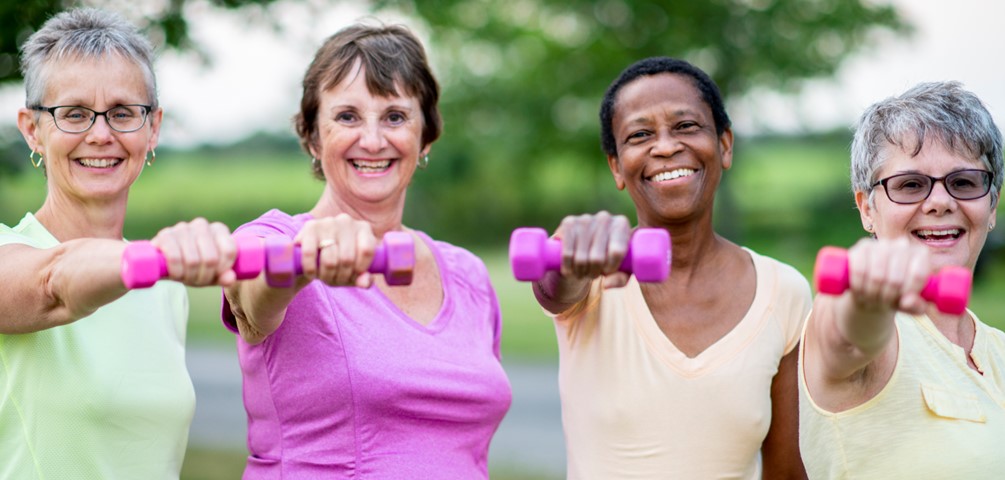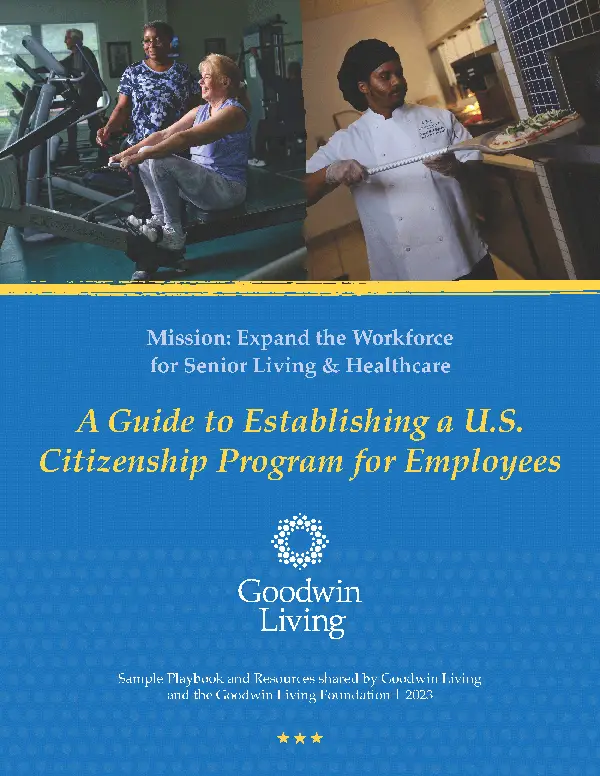
Live Comfortably - November 28, 2023
by Mamie Bialecki
Aging is a natural process that affects everyone. It's no secret that as we age, our bodies become less flexible and tasks of daily living take more time, energy and effort.
Over the last four decades, the National Institute on Aging has conducted research about maintaining strength as we age. According to their findings, 30% of adults over the age of 70 have trouble with simple, everyday movements such as getting up out of chairs, walking and climbing stairs.
This is because as we age, muscle mass decreases. A study published in the National Library of Medicine reports that "muscle mass decreases approximately three to eight percent per decade after the age of 30 and the rate of decline is even higher after the age of 60."
The age-related loss of muscle mass and strength known as sarcopenia is the leading cause of reduced mobility in older adults. Reduction in mobility can lead to many other challenges: increased falls, social isolation or even chronic disease.
Luckily, there is a simple way to ensure that your muscles stay strong and healthy as you age: strength training!
Numerous studies have shown that engaging in strength training exercises twice a week can significantly slow the decline of muscle mass while simultaneously improving overall performance and quality of life. Researchers analyzed data from the 1997-2001 National Health Interview Survey and found, "older adults who perform strength training activities not only improve their physical functioning as previously demonstrated, but their survival rate as well."
Indeed, strength training has been associated with numerous other health benefits aside from increased muscle mass and strength. These benefits include reduced symptoms and protection against conditions such as arthritis, heart disease, osteoporosis, back pain, diabetes and obesity. Some studies also suggest that strength training may lower the risk of cancer mortality.
That's great, but what exactly is strength training, you might ask?
Good question! Penn State College of Medicine states, "Strength training (also known as resistance training) is a type of exercise that causes your muscles to contract against an outside resistance." Those contractions shorten or lengthen your muscle to give it the power to move against an opposing force.
Think of lifting weights as an example. When you pick up a weight (i.e., the outside force), a muscle contraction allows your muscle to shorten and produce a greater force than the weight, thus allowing you to lift it. Lowering or pushing the weight toward the floor or sky lengthens your muscles to fight against the heaviness of the resistance object as you move it.
Now that we’ve covered some of the science behind the benefits of strength training, let’s talk about how you actually begin a strength training regime.
Starting a new exercise program can be overwhelming at first. Remember, slow and steady wins this race. Even minor changes can have a massive impact on your day-to-day life. The important thing is to start where you are and do the best that you can. As always, we recommend consulting your health care provider before engaging in any new exercise or fitness routines.
If you want help getting started, you have many options. You might reach out to a local gym or fitness trainer. Your local city or county parks and recreation centers might also have great resources such as group physical fitness classes. Another option is to search for local offerings of SAIL classes — Stay Active and Independent for Life — which offer strength training and balance exercises specifically targeted to older adults.
Alternatively, you can easily start adding strength training exercises to your daily routine from the comfort of your own home. All you need is a safe and sturdy chair, wall space, a countertop and handheld weights. Don’t own small weights? No problem! A couple cans from your food pantry will also work; just make sure both cans weigh the same.
Now that you have your essentials, let’s look at some strength training exercises you could add to your workout.
Warming up is a crucial step and ideally should last around 10 to 15 minutes. People with arthritis or a heart condition may need more warm up time. Your warm up should include light cardio (e.g., walking, jogging) and dynamic stretches such as arm circles, shoulder squeezes and walking lunges. Start slowly and gradually work your way up in intensity.
With your warm up done, it's time to move on to the workout. Remember, if you've never done strength training exercises before, start very slowly. Some of these exercises may be hard to do at first, and that's okay. It's important to remember to be kind to yourself and listen to your body. As time passes, your strength will improve making the exercises easier, or you can explore other exercises that fit your needs and body.
The following exercises may be done seated or standing, but standing will help to challenge your balance. Aim for 10-15 reps of each exercise.
To study these exercises, check out the video below for a demonstration of exercises from Goodwin House Alexandria Fitness Manager Leslie LaPlace. Leslie who has been coaching and training older adults in physical fitness for more than ten years, advises, "keep moving and use these exercises to strengthen your legs and build upper body strength. A strong body can help prevent falls, and being sedentary is one of the worst things you can do if you want to remain independent."
Congratulate yourself – you made it through! Now it's time to cool down. A good and easy choice for cool down is to take a five-minute light walk. The American Heart Association recommends aiming for a heartrate of less than 120 beats per minute, so pace yourself and don't go too fast. It’s important to stretch after your workout to help reduce stiffness, too. Try to stretch the muscles that you’ve targeted in your workout. This Silver Sneakers routine is a great two-minute cool down option.
You may have increased soreness or stiffness the day after starting your workouts, especially if you've never done strength training before or not done it recently. Delayed onset muscle stiffness is common and peaks 48-72 hours after activity.
Some soreness or stiffness might be expected, though pain while exercising could indicate incorrect form or intensity and is a sign you may need to change the exercise or give your muscles rest to reduce the chance of damage. Any pain that doesn’t go away after five to seven days of reduced intensity and rest should be evaluated by your physician. Take it easy and remember to stay hydrated.
As time goes on and the exercises become easier, look for ways to improve or extend your workout. Keep going, and don't give up. Your body will thank you in the long run! So, what are you waiting for? Start moving today!
https://www.youtube.com/watch?v=JK60u5n8AVM
________
Mamie Bialecki is a Fall 2023 Goodwin Living intern with the Marketing Communications Team. Residing in Fredrick County, Virginia, her journey toward a career change in Communications has been rewarding and transformative. She recently graduated with an associate degree in communication from Northern Virginia Community College (NVCC), where she was a member of the honor society Phi Theta Kappa. Currently, she's a dedicated student at George Mason University and is set to graduate in 2024 with a bachelor’s degree in communications, specializing in both public relations and interpersonal organizational communication.
